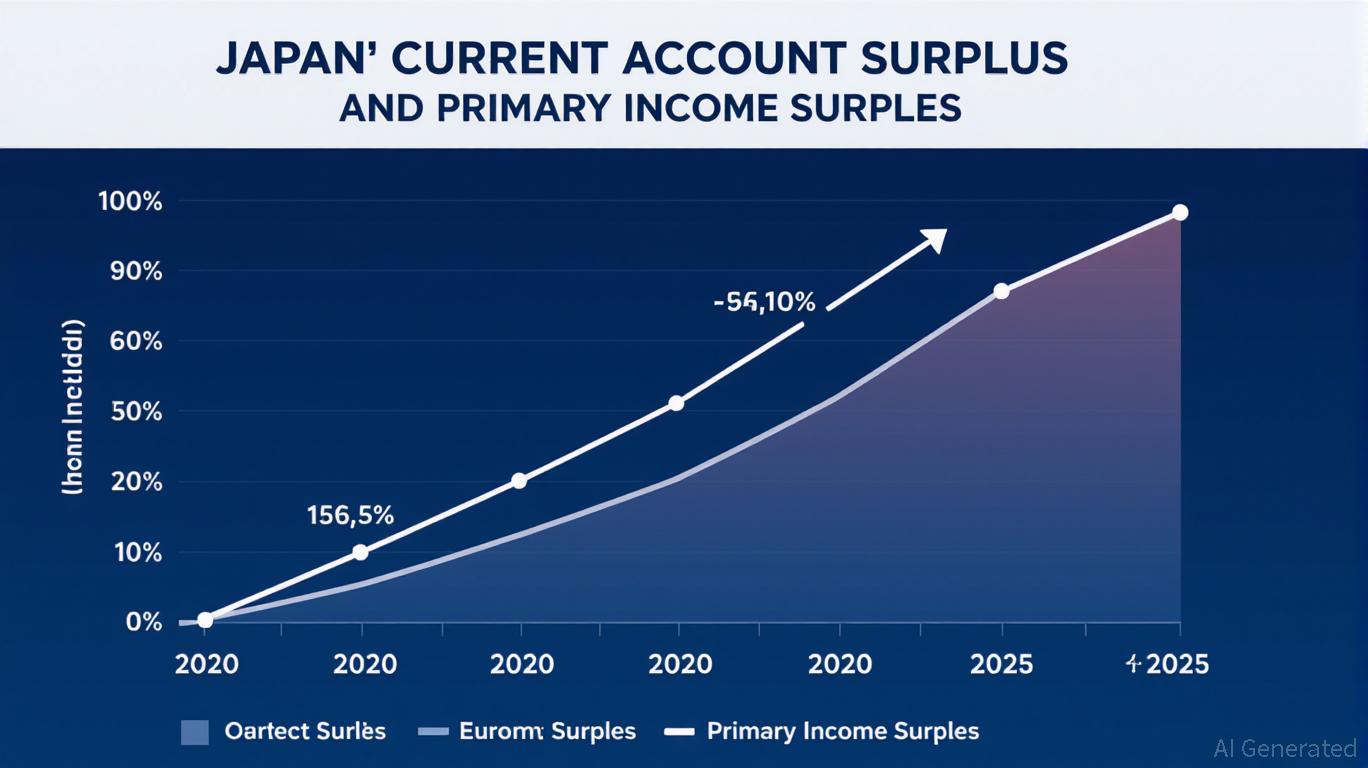Japan’s current account surplus has reached unprecedented levels in 2025, driven by a seismic shift in its economic model. While traditional trade surpluses have waned, the country’s primary income—earnings from overseas investments—has emerged as the cornerstone of its external balance. This structural transformation, coupled with the yen’s continued depreciation, creates a unique opportunity for investors to capitalize on undervalued Japanese equities and overseas-invested firms.
The Power of Primary Income: A New Engine for Japan’s Economy
Japan’s current account surplus for fiscal year 2024 hit a record 30.4 trillion yen, with primary income contributing a staggering 41.7 trillion yen—a 11.3% year-over-year surge. This growth stems from two key factors: a weaker yen, which inflates the value of overseas earnings in yen terms, and the scale of Japan’s global investments. With net external assets of 533 trillion yen, Japan remains a major creditor nation, its returns from foreign direct investments, dividends, and interest payments outpacing trade deficits.
The yen’s depreciation, which averaged 151.48 against the U.S. dollar in 2024 (a 7.8% decline from 2023), has amplified this effect. For example, Japanese firms with overseas operations see higher yen-based profits as foreign currencies strengthen. This dynamic is particularly evident in sectors like manufacturing, retail, and automotive, where offshore subsidiaries generate robust returns.

Undervalued Equities: A Goldmine for Investors
Despite Japan’s economic resilience, its small- and mid-cap equities trade at compelling valuations. The TOPIX has a P/E of 15x and a P/B of 1.5x, while Japanese small-cap stocks are even more undervalued, with a P/E of 13x and a P/B of 1.2x. In contrast, U.S. equities trade at significantly higher multiples, making Japan’s market a value outlier. The MSCI Japan Small Cap Index is trading at a P/E of 13.5x and a P/B of 1.1x, compared to the MSCI USA Index’s P/E of 4.8x and P/B of 2.1x. This valuation gap—the widest in over a decade—reflects a disconnect between fundamentals and investor sentiment.
Moreover, Japanese small-cap stocks offer higher dividend yields than large-cap counterparts, with a spread of 0.5%—a level not seen since 2001. This is driven by corporate governance reforms that have spurred share buybacks and improved capital efficiency. Approximately 30% of small-cap stocks on the Tokyo Stock Exchange trade at a P/B ratio below 1x, suggesting significant upside potential as markets realign.
Overseas-Invested Firms: Leveraging Yen Depreciation
Japanese firms with strong overseas exposure are particularly well-positioned to benefit from the yen’s weakness. Consider Nissei ASB Machine (6284), a global leader in PET bottle stretch blow molding machines. With 90% of its revenue generated overseas and 50% of production based in India, the company has seen earnings bolstered by the weaker yen. Nissei ASB is also raising its dividend payout ratio and expanding into new markets like HDPE containers, signaling a commitment to capital efficiency.
Similarly, Maeda Kosen (7821), a manufacturer of forged wheels for luxury vehicles, is capitalizing on the trend toward larger-diameter wheels, which command higher prices. The company has expanded production capacity and diversified into magnesium wheels, while its recent M&A activity underscores a strategic shift toward growth. Both firms exemplify how Japanese companies are adapting to global demand and leveraging exchange rate dynamics.
Strategic Investment Implications
The convergence of Japan’s record primary income surplus, yen depreciation, and undervalued equities presents a compelling case for investors. Here’s how to position portfolios:
Target Small- and Mid-Cap Equities: Focus on firms with strong governance reforms, capital return policies, and overseas exposure. The valuation gap between Japanese and U.S. small-caps suggests potential for outperformance. Overseas-Invested Firms: Prioritize companies in manufacturing, materials, and automotive sectors that benefit from yen depreciation. Look for firms with growing global market shares and strategic expansion plans. Dividend Yield Arbitrage: Japanese small-cap stocks offer attractive income potential, with yields outpacing large-cap peers and U.S. counterparts. Conclusion: A Rebalancing of Global Capital
Japan’s current account surplus is no longer a relic of its export-driven past but a testament to its evolved role as a global investor. The yen’s depreciation and the undervaluation of its equities create a fertile ground for capital reallocation. For investors, this is a rare opportunity to tap into a market where fundamentals are strong, valuations are compelling, and strategic shifts are unlocking value.
As the world grapples with shifting trade dynamics and currency fluctuations, Japan’s model offers a blueprint for sustainable external earnings—and a pathway to long-term portfolio resilience.


AloJapan.com